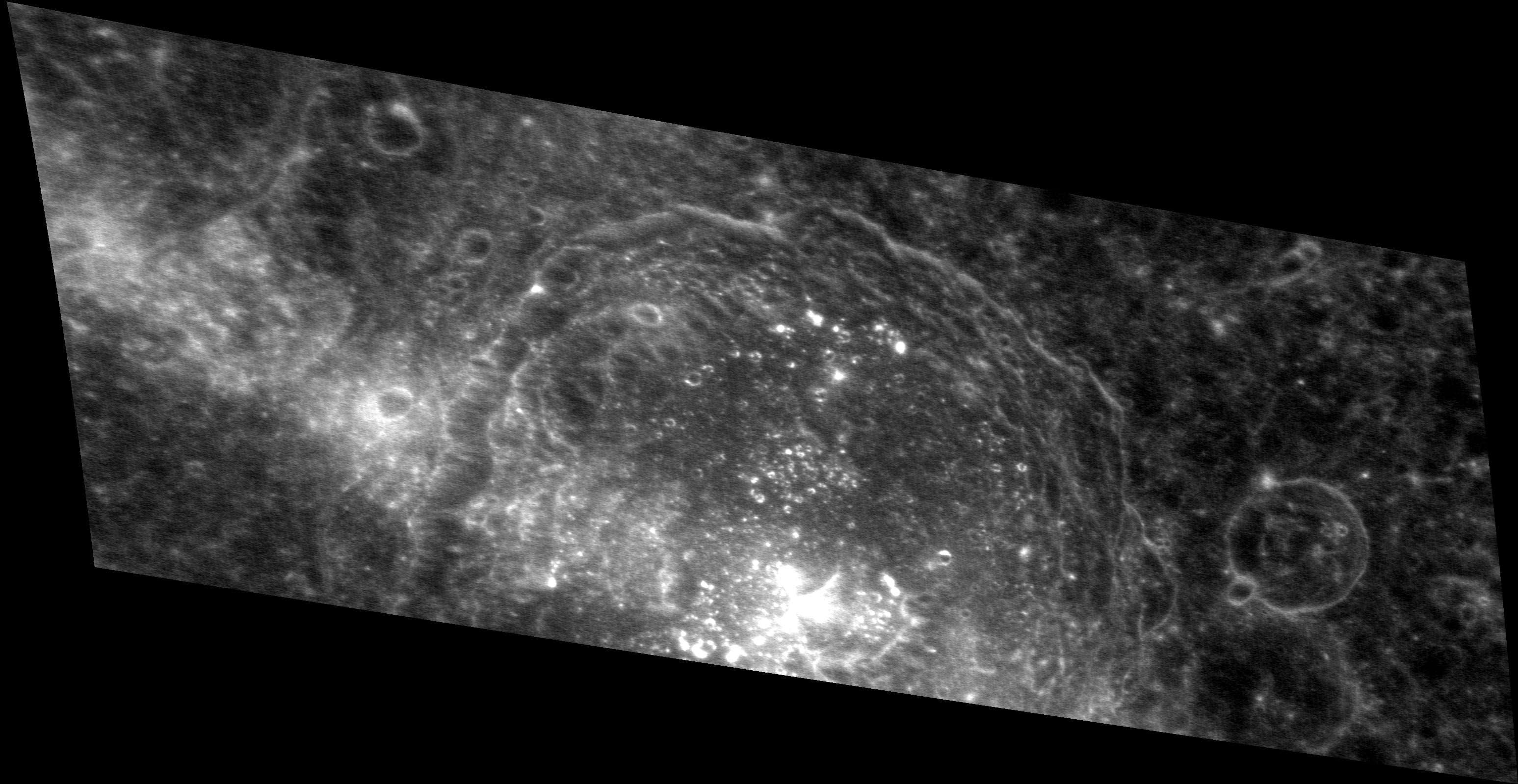[/caption]
The MESSENGER spacecraft is still happily orbiting Mercury since its orbit insertion in mid-March, and here are some of the latest images sent back from the first rock from the Sun. In this image, the central peaks inside a large crater named Asvaghosa show up as exceptionally bright. The MESSENGER team believes that their high reflectance appears to have been enhanced by the crater rays that cross the area, which originates from another crater. Asvaghosa is 90 km (56 mi.) in diameter, and was targeted for special, high-resolution observations, where MESSENGER's cameras zero-in for the closest looks possible. While it is not possible to cover all of Mercury's surface at this high of a resolution during the spacecraft's one-year mission, several areas of high scientific interest are generally imaged in this mode each week.
See more below!
[caption id="attachment_85021" align="aligncenter" width="580" caption="Oblique view of Bek crater on Mercury. Credit: NASA/Johns Hopkins University Applied Physics Laboratory/Carnegie Institution of Washington"]
[/caption]
What a unique, swirling crater -- and this high-resolution view of Bek crater (32 km (20 miles) in diameter) has me trying to imagine scaling the cliffs seen in this incredible vista. The MESSENGER team says that the sharp crater rim is in contrast to its subdued surroundings, where crater ejecta scoured the surface and left behind many secondary craters.
[caption id="attachment_85022" align="aligncenter" width="580" caption="'Weird terrain' inside the crater Petrarch on Mercury. Credit: Credit: NASA/Johns Hopkins University Applied Physics Laboratory/Carnegie Institution of Washington"]
[/caption]
When scientists from the Mariner 10 team first saw this region around Petrarch crater, they called it "weird terrain." The rugged terrain has an unusual "hilly and lineated" that may have been modified by converging seismic waves and/or ejecta from the formation of the Caloris basin, which is located on the opposite side of the planet. Now, MESSENGER viewed this area under differing lighting conditions than those seen during MESSENGER's second flyby and Mariner 10's first pass. The large, smooth area in the upper left is the floor of Petrarch.
See more of the latest images from MESSENGER on the mission's gallery on their website.
 Universe Today
Universe Today
